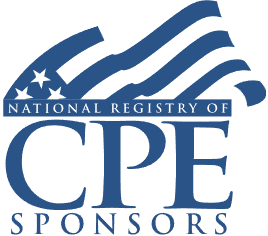Sampling Strategies in Sales Tax Audits: Selecting an Appropriate Methodology and Negotiating With Auditors

Course Details
- smart_display Format
On-Demand
- signal_cellular_alt Difficulty Level
Intermediate
- work Practice Area
Corporate Tax
- event Date
Thursday, July 23, 2020
- schedule Time
1:00 p.m. ET./10:00 a.m. PT
- timer Program Length
110 minutes
-
BARBRI is a NASBA CPE sponsor and this 110-minute webinar is accredited for 2.0 CPE credits.
-
Live Online
On Demand
This course will prepare state tax professionals to establish audit samples for a state sales or use tax audit by reviewing proven sampling strategies used by corporate tax departments in audits across diverse industries.
Faculty

Mr. McGlamery is responsible for the design and evaluation of audit sampling methodologies in statistical and non-statistical tax audits. He is focused on services and education surrounding data manipulation, data mining, and data extraction. He lectures on sampling methodologies, audit sampling issues and data manipulation topics.

Ms. Szal focuses her practice on assisting businesses in all aspects of state and local tax controversy, from regulatory and administrative proceedings through civil litigation. She came to Brann & Isaacson following several years at the Massachusetts Department of Revenue. As Counsel in both the Litigation Bureau and Office of Appeals, she focused on complex tax issues facing corporations and pass-through entities. She earned her LL.M. in Taxation and Certificate in State and Local Taxation, both with distinction, from Georgetown University Law Center.

Mr. Tomlinson has more than 29 years of experience in state and local taxation, specializing in statistical sampling techniques for multiple taxes. From 2007 until joining the firm, he was an assistant administrator for the Ohio Department of Taxation, Audit Division, while also serving as the manager of the Computer Assisted Audit Group for more than 11 years. In that position he was responsible for the formulation, implementation, and oversight of the Department's statistical auditing practices; including the approval of all data populations, sample designs, and the review of all statistical sampling procedural agreements.
Description
The sampling of data, including invoices, purchase orders, and other data, is the primary factor determining whether a state sales or use tax audit turns out favorably for your company. It is also an increasingly high priority for corporate taxpayers as more states mandate sampling and submission of electronic data.
The size and makeup of the sample come down to hard-nosed negotiations between your tax staff and the revenue department. To make your best case, you must thoroughly understand the state's guidelines to detect vulnerabilities in the state's sampling methodology or block.
Listen as our panel prepares you to seize the initiative on establishing audit samples.
Outline
- Planning and negotiating a sample
- Population selection
- Choosing the proper sample frame
- Stratum and overall sample sizes
- Sampling fundamentals
- Block vs. statistical sampling
- Stratified random sampling
- Legal issues and background
- Do's and don'ts of sampling: avoiding the wheels-off sample audit
- Examples of sample audits that went badly
- Trends with sampling in big states, including computer-assisted audit process
Benefits
The panel will review these and other key issues:
- Making smart decisions about sample size: Will a small sample work and reduce staff time chasing invoices or will a large sample boost your case?
- Fighting back if the revenue department either tries to keep out data that could land your company a credit or insists on an overly large sample
- Reacting when the auditor clearly doesn't understand your company's compliance system or overlooks accounts that favor your position
- Crafting a proposal to sample data for a refund claim
- Limitations on the state's power to sample and what you do when asked to agree to sampling
NASBA Details
Learning Objectives
After completing this course, you will be able to:
- Recognize peer-tested strategies and tactics to use in establishing a sample of documentation for sales and use tax purposes
- Discern how to assert the relevance of documentation plans to revenue department officials
- Determine how to defend documentation samples against a challenge from state auditors
- Field of Study: Taxes
- Level of Knowledge: Intermediate
- Advance Preparation: None
- Teaching Method: Seminar/Lecture
- Delivery Method: Group-Internet (via computer)
- Attendance Monitoring Method: Attendance is monitored electronically via a participant's PIN and through a series of attendance verification prompts displayed throughout the program
- Prerequisite: Three years+ business or public firm experience at mid-level within the organization, preparing complex sales and use tax forms and audits; supervisory authority over other tax staff. Knowledge and understanding of sales and use tax data sampling and audits. Familiarity with must states' sampling methodology guidelines.

Strafford Publications, Inc. is registered with the National Association of State Boards of Accountancy (NASBA) as a sponsor of continuing professional education on the National Registry of CPE Sponsors. State boards of Accountancy have final authority on the acceptance of individual courses for CPE Credits. Complaints regarding registered sponsons may be submitted to NASBA through its website: www.nasbaregistry.org.
Unlimited access to premium CLE courses:
- Annual access
- Available live and on-demand
- Best for attorneys and legal professionals
Unlimited access to premium CPE courses.:
- Annual access
- Available live and on-demand
- Best for CPAs and tax professionals
Unlimited access to premium CLE, CPE, Professional Skills and Practice-Ready courses.:
- Annual access
- Available live and on-demand
- Best for legal, accounting, and tax professionals
Unlimited access to Professional Skills and Practice-Ready courses:
- Annual access
- Available on-demand
- Best for new attorneys
Related Courses

LLC Conversions: Utilizing IRC Section 351 for Tax-Free Exchanges
Available On-Demand

Construction Professional Services Agreements
Available On-Demand

Form 3115 Change in Accounting Method: Navigating the IRS Repair Regulations
Available On-Demand